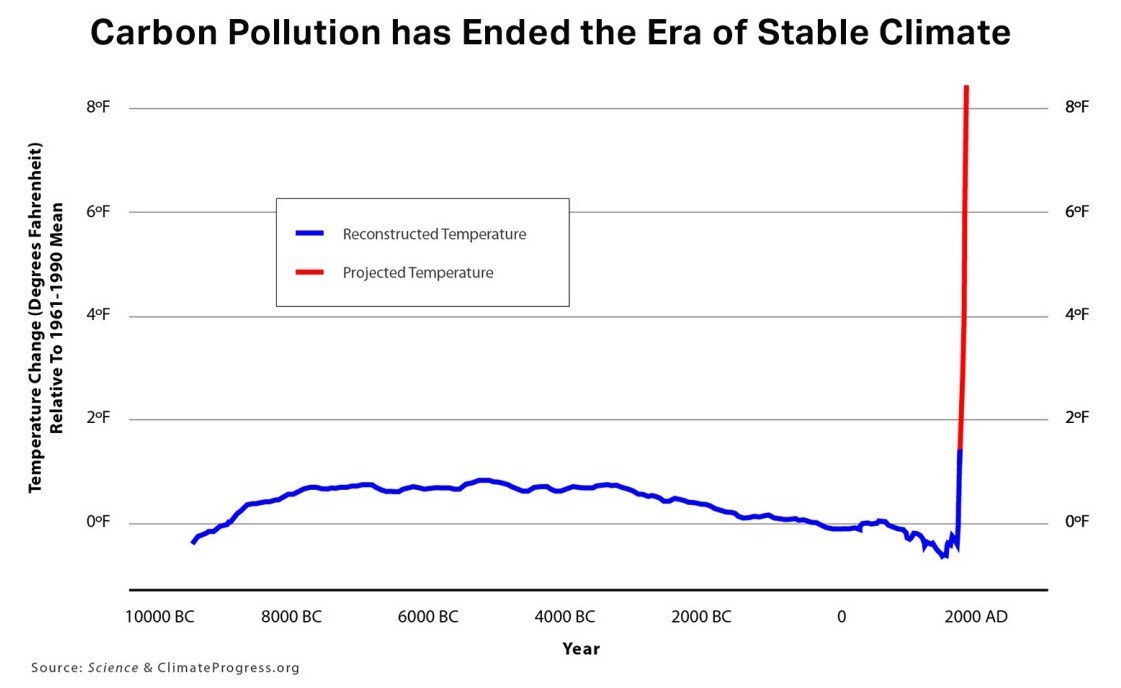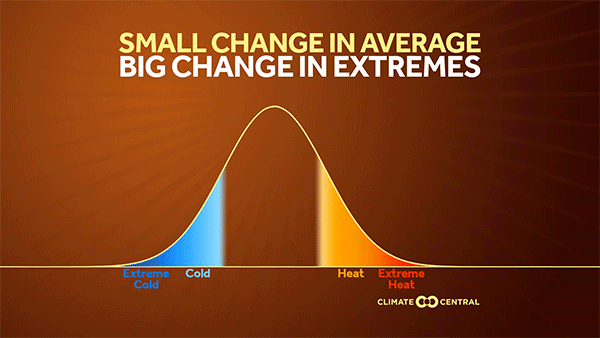You’ve probably seen the term “new normal” used to describe how human caused climate change has forever changed the kind of weather we can expect.
It’s a catchy, alliterative phrase used in connection with Hurricane Florence by the National Geographic and Washington Post — and to describe climate impacts more generally by The New York Times and many others.
But the problem is that the phrase is counter to both the latest climate science and the “normal” connotation of the word “normal” which means “conforming to a type, standard, or regular pattern.”
If each decade brings its own unique, ever worsening disasters — and if this never-stabilizing condition continues for a century (and, more likely, many centuries) — then there are no norms, no standards, no regular pattern or points of reference.
Because things will keep changing with rising temperatures, with extremes becoming more extreme, there is no point at which one can plausibly say “This is the new normal, and this is what it is going to be like from now on.”
So, the “new normal” catchphrase is utterly misleading to the general reader and should not be used.
A quick look at the science yields further insight into why this term can be so misleading.
First, in recent years, research has made it increasingly clear that — after an 11,000 year period of relative stability — the climate has become destabilized by human emissions of carbon pollution, putting us on a path towards steadily rising temperatures throughout the century.
Decade after decade, we are destroying the conditions that enabled the development of modern civilization, global agriculture, and a world that could sustain a vast population.

In this business-as-usual case — without more drastic action taken to cut the world’s greenhouse gas emissions — we will continue warming more than 50 times as fast as the planet was (slightly) cooling in the past 5000 years.
So, if the bell curve for what defines normal keeps shifting, where, precisely, does one identify the point that is the “new normal” this century?

And it’s not just global temperatures that are being destabilized, so are sea levels. That’s clear from the Trump administration’s own November 2017 National Climate Assessment.
This “authoritative assessment of the science of climate change” explains that sea levels do not stop rising this century. Even worse, if the country’s do-little climate policies continue — or, worse, actually get rolled back as they are under Trump — then the rate of sea level rise will actually speed up.
The current rate of sea level rise is about an inch per decade, which is double what it was a quarter-century ago. Under the business-as-usual case, it hits one foot per decade after 2050, and then two feet per decade after 2100.
Again, where, precisely, does one identify the point that is the “new normal” for our coastlines — and the new normal for coastal flooding from storms like Florence, which themselves are going to keep growing stronger and wetter?
Yes, it’s true that the nation and the world have some (rapidly fading) hope of stabilizing the climate this century. But as ThinkProgress reported last month, our current climate is near the very edge of stability, according to a major new study by 16 leading climate scientists.
We are pushing the planet toward an irreversible “Hothouse Earth” — catastrophic warming of 9°F or more with ultimate sea level rise of up to 200 feet. And that study warns we are much closer to the “point of no return” than most people realize.
Just meeting the near-term CO2 emissions targets that more than 190 nations agreed to in the 2015 Paris Climate Accord will not avoid this fate. The “Hothouse Earth” study — and many others — make clear the world must keep reducing emissions down to zero before 2100 to stabilize temperatures at non-catastrophic levels.
But neither the U.S. or the world are anywhere near that course of action. So, while stabilizing at some “new normal” in the coming decades remains a theoretical possibility, it is not the world future we are currently headed towards.
Some have tried to argue that the word “normal” or phrase “new normal” could somehow be used to describe a situation of constant change, but that is to ignore the fact that the change won’t be constant — it will be speeding up, and in unpredictable manner.
Also, “normal” can’t mean “unnaturally rapid change” without rendering the word utterly meaningless. Indeed, the word — whose connotation is built around the idea of “norm” or “average” or “standard” — derives from the “Latin normalis“made according to a carpenter’s square,” from norma “rule, pattern,” literally “carpenter’s square.”
The New York Times captured this understanding in a story from last month. As the sub-headline stated, “It’s hot. But it may not be the new normal yet. Temperatures are still rising.”
A climate scientist on preparing for the global fallout of rising temperatures: “We haven’t caught up to it. I haven’t caught up to it, personally.” https://t.co/GwXbZqP7So
— NYT Science (@NYTScience) August 9, 2018
You can’t have a “new normal” until the unnaturally — and hence abnormally — rapid change humans have initiated comes to an end, which is increasingly unlikely to happen in the lifetime of anyone living today.
Of course, the term “new normal” is catchy and popular — the New York Times even used it in a headline in July: “‘The New Normal’: Wildfires Roar Across the West, Again.”
So while it’s a scientifically inaccurate and very misleading term, it’s probably going to keep being used by the media, which is, unfortunately, normal for climate coverage.





